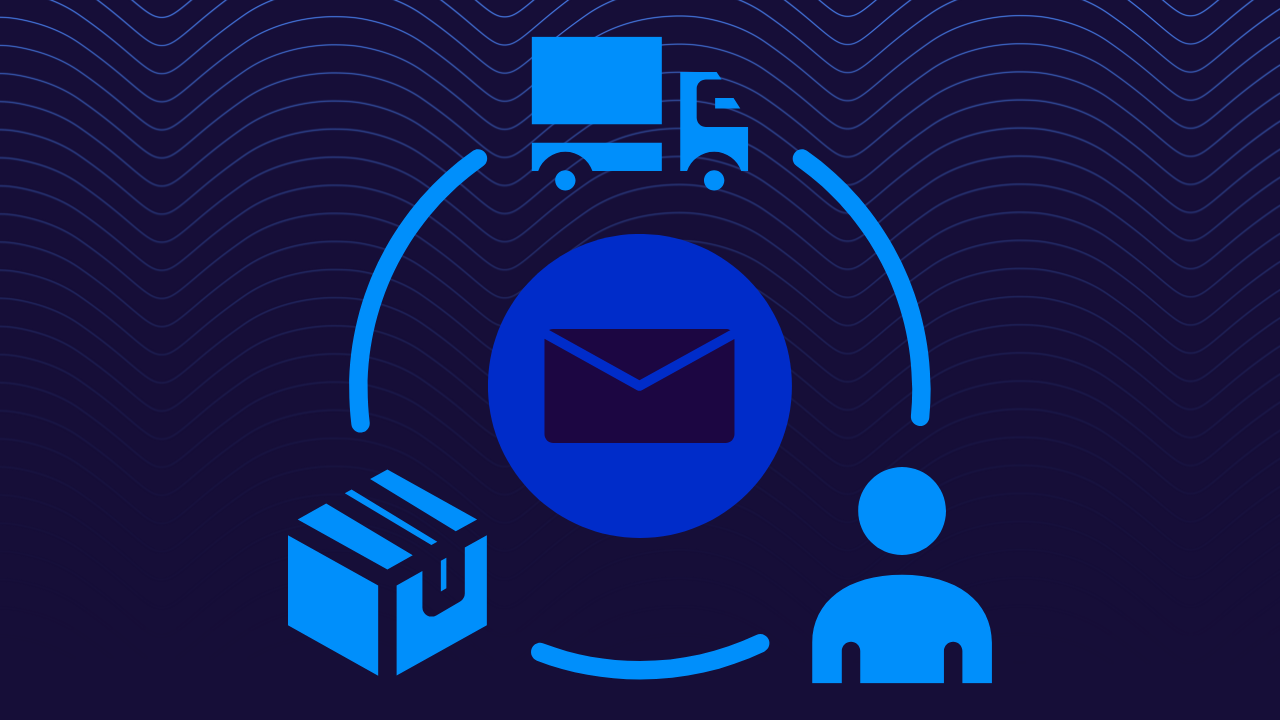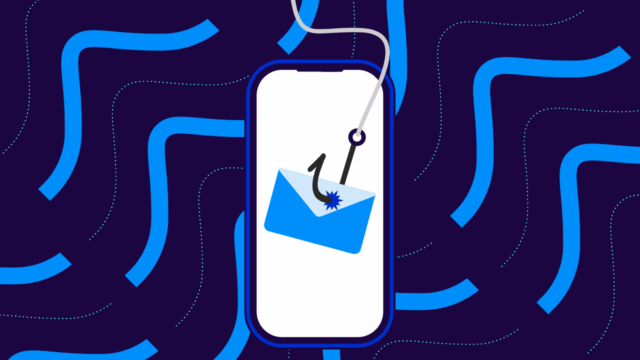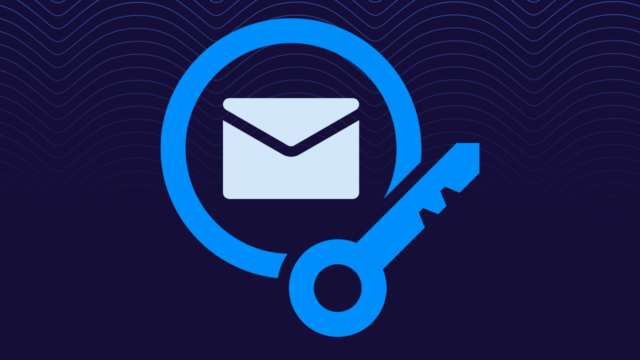Manufacturing demands borderline perfection—from the tiniest component to the final product. With that attention to detail, why would you leave your email security to chance?
Today’s always-online, the always-connected world makes your email domain just as important to operations as any machine on the factory floor. It’s the gateway for orders, the channel for supplier communications, and often the first point of contact for your customers (and, potentially, cybercriminals).
And that’s where Domain-based Message Authentication, Reporting, and Conformance (DMARC) can help. Consider it the quality control system for your emails—it makes sure only the clean, genuine articles make it through.
However, it’s not just about blocking the bad stuff—it’s about ensuring your legitimate emails get where they need to go. We both know an order confirmation that lands in the spam folder is about as useful as a wrench made of chocolate.
Below, we’ll break down everything you need to know about DMARC in manufacturing: what it is, why it’s a must-have, and how to implement it without any hiccups in your operations.
What is DMARC?
DMARC is an email authentication protocol that makes sure every message that goes out (or comes in) is legit. Just as you wouldn’t let faulty parts slip into your production line, DMARC doesn’t let unauthorized emails slip through using your domain name.
When emails fail authentication checks (like SPF and DKIM), DMARC tells the email providers what to do with the message:
- p=none: Deliver the email anyway, but send reports back to the domain owner
- p=quarantine: Send the email to the spam folder
- p=reject: Don’t deliver the email at all

- Authentication: DMARC teams up with two other protocols—Sender Policy Framework (SPF) and DomainKeys Identified Mail (DKIM). Together, they triple-check your email communications. SPF verifies the sender’s IP address, DKIM adds a digital signature, and DMARC ties it all together.
- Impersonation Defense: DMARC stops phishing attempts before bad actors trick your customers (or you). It guarantees that only authorized senders can use your domain, making it nearly impossible for scammers to impersonate your company.
- Visibility: DMARC provides detailed reports on your email traffic. You’ll see attempted fraud, potential vulnerabilities, and how your emails are processed.
- Flexibility: We know manufacturing operations can be complex—there are multiple suppliers, distributors, departments, you name it. DMARC is flexible enough to handle this complexity while still maintaining tight security.
Plus, DMARC won’t require you to overhaul your entire operation. It works with your existing email infrastructure and adds a layer of security that’s as strong as your factory’s firewalls.
Why manufacturing companies need DMARC
Here’s why DMARC isn’t just a nice-to-have:
- Protecting your secrets: Your intellectual property is the lifeblood of your business. DMARC helps prevent cybercriminals from using your domain to trick employees or partners into revealing trade secrets or designs.
- Securing your supply chain: In manufacturing, a hiccup in the supply chain can bring everything to a screeching halt. DMARC guarantees that emails from your suppliers (and to your distributors) are legitimate. No more worrying about fake invoices or fraudulent shipping notices.
- Keeping you compliant: DMARC helps you tick those cybersecurity boxes to show you’re serious about protecting sensitive information.
- Safeguarding your brand: Your reputation is everything. DMARC stops scammers from impersonating your brand in emails, protecting your good name with customers, partners, and suppliers.
- Improving email deliverability: Ever wonder why some important emails end up in spam folders? DMARC can help prevent that by telling inbox providers that your messages are wanted.
The real cost of email fraud in manufacturing
Sure, implementing DMARC will require some upfront investment in time and resources, but the cost of not implementing DMARC can be steeper than you might think:
- Financial hit: Imagine a scammer tricks your accounts payable into wiring a six-figure sum for “emergency supplies.” By the time you realize it’s fraud, that money’s gone. And that’s just the direct loss—don’t forget the costs of investigation, system overhauls, and potential legal fees.
- Production slowdowns: Email fraud can lead to delays in orders, shipments, or supplier payments. In manufacturing, time is money, and these disruptions can cost you big time.
- Reputational damage: If word gets out that your email domain isn’t secure, partners might think twice before doing business with you. Rebuilding trust is much harder (and more expensive) than maintaining it.
- Compliance penalties: Depending on your industry, a security breach could lead to hefty fines.
- Long-term impact: The fallout from a major email fraud incident can linger for years and affect everything from customer relationships to your ability to negotiate favorable terms with suppliers.
Implementing DMARC is an investment in your company’s future. It’s like upgrading your machinery—there’s an upfront cost, sure, but the long-term benefits far outweigh it. And unlike that shiny new equipment, DMARC starts paying for itself when it blocks its first fraudulent email.
“Outcomes show that implementing DMARC is one of the highest ROI solutions available. Just make sure to insist on enforcement (activation) and that the process is automated – otherwise, DMARC can be daunting.”
– Alexander Garcia-Tobar, CEO, Valimail
Challenges of implementing DMARC in manufacturing
Implementing DMARC in a manufacturing environment isn’t always a smooth production run (but nothing ever starts that way, right?). There can be a few bumps along the way. Fortunately, like any good engineer, we’ve also got the solutions to help you overcome any of these obstacles.
Legacy systems and equipment
Challenge: Many manufacturers rely on older systems that weren’t designed with modern email authentication in mind. These legacy systems can make implementing DMARC feel like fitting a square peg in a round hole.
Solution: Start by auditing your systems to identify which ones need updates. For those that can’t be immediately upgraded, look for interim solutions that bridge old and new technologies. Remember, progress is progress—even if it’s one system at a time.
Global operations and multiple domains
Challenge: Large manufacturers often operate globally with multiple domains and subdomains. Managing DMARC across this complex landscape is easier said than done.
Solution: Start with a comprehensive domain audit. Create a systematic plan to implement DMARC across all domains and prioritize those handling the most sensitive information. Consider using a DMARC management platform like Valimail, which can handle multiple domains from a single dashboard.
Third-party integrations
Challenge: Manufacturers often work with several suppliers, distributors, and other partners who send emails on their behalf. Aligning all these moving parts with your DMARC policy can be downright tricky.
Solution: Communicate clearly with your partners about your DMARC implementation. Provide them with guidelines and support. Consider implementing DMARC in phases to minimize disruptions. A good DMARC solution can help automatically identify legitimate third-party senders.
Resource constraints
Challenge: Your IT team is probably already stretched thinner than the last bit of welding wire on the spool. Finding the time and expertise to implement and maintain DMARC isn’t something you can just take care of on a one-off weekend.
Solution: Look into automated DMARC solutions like Valimail that can reduce the burden on your IT team. Remember, the cost of implementing DMARC is often far less than dealing with a major security breach.
Policy hesitations
Challenge: DMARC provides different policy options that range from simply monitoring to outright rejecting non-compliant emails. Choosing and implementing the right policy can feel like walking a tightrope—too lax, and you’re not fully protected; too strict, and you might disrupt legitimate emails.
Solution: Start with a monitoring policy of p=none. This will help you collect data without affecting email flow. Over time, gradually increase the strictness as you become more confident in your setup. Many organizations like to move to quarantine (p=quarantine) before finally implementing a reject policy (p=reject).
How to implement DMARC for manufacturing organizations
Implementing DMARC can feel overwhelming, but it’s nothing compared to what you’ve already done building your manufacturing business. And it’s much more digestible when you break it down into smaller, more manageable steps:
1. Evaluate your current email infrastructure
Before you start, you need to know what you’re working with. Audit your email systems and identify all the domains and subdomains you use. Don’t forget about those third-party services sending emails on your behalf.
2. Implement SPF
Start by creating an SPF record that lists all the servers authorized to send email on behalf of your domain.
3. Set up DKIM
DKIM adds a digital signature to your emails. It’s like stamping each email with your company’s seal of authenticity. Configure DKIM for all your sending services—it’s an extra step, but it’s worth it for the added security.
4. Create your DMARC record
Now, it’s time to create your DMARC record. Start with a p=none policy—this allows you to monitor without affecting email delivery.
5. Publish your DMARC record
Add your DMARC record to your DNS settings. Your DMARC is now active (but in monitoring mode).
6. Monitor and analyze
Watch those DMARC reports. They’ll show you who’s sending email on your behalf and whether they’re passing authentication.
7. Identify and fix issues
You’ll likely spot some authentication failures. Don’t panic—it’s perfectly normal. Work through these issues methodically, updating your SPF and DKIM as needed.
8. Gradually increase policy strictness
Once you’re confident in your setup, start tightening the screws. Move to a p=quarantine policy that sends failed messages to spam. Eventually, progress to a p=reject policy that blocks unauthenticated emails entirely.
9. Implement on all subdomains
Don’t forget about your subdomains—they need protection, too. Repeat the process for each of your subdomains.
DMARC best practices for securing manufacturing operations
There are right and wrong ways to get started with DMARC. While you’ll eventually get to the right place (hopefully), these best practices will set you up for success from the get-go:
- Start with monitoring: Begin with a p=none policy. It’s like running a new machine in test mode before full production. This allows you to gather data and understand your email ecosystem without disrupting legitimate mail flow.
- Tailor your approach for different domains: Not all domains are created equal. Your main domain might need stricter policies compared to a marketing subdomain. Consider it like having different safety protocols for different areas of your factory.
- Leverage DMARC reports: Don’t just set it and forget it. Regularly analyze your DMARC reports to spot trends and address issues.
- Communicate with third-party senders: Keep your suppliers (third-party email senders) in the loop. Provide them with clear guidelines on how to authenticate their emails.
- Integrate DMARC into your overall security strategy: DMARC works best as part of a comprehensive approach. Combine it with employee training and other security measures.
- Keep an eye out for domain abuse: Use DMARC reports to spot attempted spoofing or phishing. Have a process ready to address any abuse quickly. It’s your early warning system for email-related security issues.
- Regularly update your SPF and DKIM records: As your email sending infrastructure changes, update your records accordingly.
- Consider implementing BIMI: Once you’ve reached DMARC enforcement, look into Brand Indicators for Message Identification (BIMI). It adds your company’s logo to your email messages (in most inboxes).
- Automate where possible: Consider using a DMARC management platform like Valimail to automate your DMARC enforcement. It streamlines the process and gives you access to email experts.
Protect your manufacturing organization with Valimail
You wouldn’t run your production line without proper safety measures, so why leave your email domain unprotected? We get it—manually implementing and maintaining DMARC can feel like a full-time job, but that’s why we’re here to help.
Valimail is your partner in email authentication. We provide:
- Automated implementation that won’t strain your already-busy IT team
- Real-time monitoring and alerts to catch potential threats before they become problems
- A solution designed with manufacturing compliance in mind
- Expert support from a team that understands the unique challenges of the manufacturing sector
We’ve helped manufacturing companies like General Dynamics Mission Systems, Applied Industrial Technologies, Schneider Electric, and many more implement DMARC in a fraction of the time it would take to do it manually. Thanks to Valimail Enforce, our clients sleep better at night, knowing their email domains are as secure as their factory floors (if not more so).
Ready to see how we can create a custom solution for your manufacturing needs?


